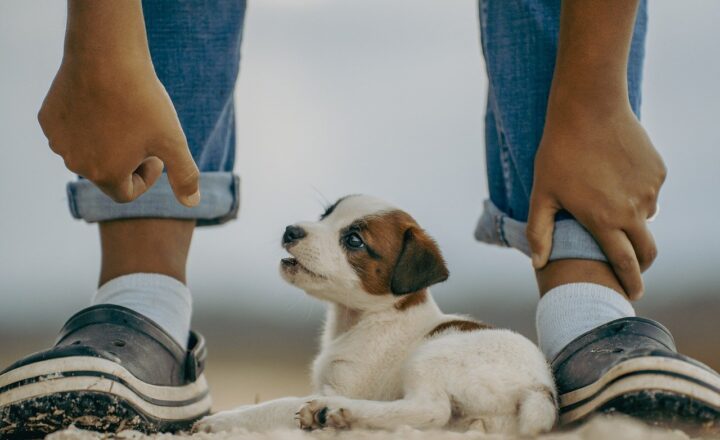Top Tips for Training Your New Puppy: A Guide for First-Time Pet Owners
November 15, 2024

Bringing a new puppy into your home is an exciting experience, filled with joy, cuddles, and countless opportunities for learning. However, the responsibility of training your puppy can often be daunting, especially for first-time pet owners. Puppies, like children, need proper guidance to understand what behavior is acceptable and what is not.
Training your puppy is not just about ensuring they follow commands; it’s about building a bond of trust and respect between you and your new furry friend. In this guide, we will discuss essential tips and techniques that will set the foundation for a well-behaved, happy, and respectful dog that fits seamlessly into your life.
1. Establish a Routine
One of the first steps in training your puppy is establishing a daily routine. Puppies thrive on consistency, so setting a schedule for feeding, bathroom breaks, playtime, and training sessions will help your puppy understand what to expect each day. A structured routine can aid in housebreaking as well, as it encourages regular potty breaks at specific times, reducing accidents in the house.
**Key components of a daily routine may include:**
– Regular feeding times (usually 3 times per day for puppies)
– Scheduled bathroom breaks (after eating, waking up, and playtime)
– Designated playtime and training sessions
– Consistent bedtimes
2. Positive Reinforcement: The Key to Successful Training
Positive reinforcement is one of the most effective training techniques you can use with your puppy. This involves rewarding desired behaviors with treats, praise, or playtime, thus reinforcing those behaviors in the future.
**Here’s how to implement positive reinforcement effectively:**
– **Be consistent:** Use the same commands and rewards for specific behaviors to help your puppy learn more quickly.
– **Timing is crucial:** Reward your puppy immediately after they perform the desired action so they can associate the behavior with the reward.
– **Use high-value treats:** Choose treats that are special and exciting for your puppy, especially for training. These can be small pieces of chicken, cheese, or store-bought puppy treats.
– **Gradually reduce treats:** As your puppy becomes more proficient in a command, you can start decreasing the frequency of treats but continue to offer praise to ensure the behavior remains reinforced.
3. Start with Basic Commands
When starting your training journey, focus on basic commands that every dog should learn. These commands not only improve communication but also ensure your puppy’s safety. Basic commands include:
– **Sit:** Helps to instill calm behavior and is the foundation for other commands.
– **Stay:** A critical command for keeping your puppy in a safe space.
– **Come:** Essential for when you need your puppy to return to you, especially in risky situations.
– **Leave it:** Helps prevent your puppy from picking up potentially harmful objects or treats.
**Training tips for basic commands:**
– Use clear, concise commands, and avoid using multiple words.
– Practice in short, consistent sessions of about 5-10 minutes to maintain your puppy’s focus.
– Repeat sessions throughout the day, incorporating commands into everyday life.
4. Socialize Your Puppy Early
Socialization plays a crucial role in developing well-adjusted dogs that are comfortable in different environments. Early socialization helps prevent behavioral issues in adulthood.
**Here’s how to socialize your puppy effectively:**
– **Expose them to various people:** Introduce your puppy to friends, family, and strangers to help them feel comfortable around different individuals.
– **Visit different environments:** Take your puppy to parks, pet-friendly stores, and other public places. Exposure to new sights, sounds, and smells encourages adaptability.
– **Organize playdates:** Arrange playdates with other vaccinated puppies or calm adult dogs to foster healthy interactions.
5. Be Patient and Consistent
Training takes time and patience; your puppy is learning all new things and may not understand your expectations right away. Inconsistent training can confuse your puppy and make it harder for them to learn.
**Remember:**
– Avoid punishment; instead, redirect unwanted behavior to acceptable alternatives.
– Celebrate small successes and show excitement when your puppy accomplishes tasks.
– Maintain a persistent and calm attitude, as your puppy picks up on your emotions.
6. Address Behavioral Issues Early
It’s vital to address any behavioral issues you notice early on. Ignoring behaviors like excessive barking, chewing, or jumping can lead to more significant problems in the future.
**Strategies for managing unwanted behavior:**
– **Redirect negative actions:** Instead of scolding, distract your puppy with a toy or engage them with a command.
– **Provide adequate exercise:** Many behavioral issues stem from pent-up energy. Ensure your puppy gets adequate physical and mental stimulation to keep them happy and content.
– **Consider professional help:** If issues persist or you feel overwhelmed, consulting a professional trainer can provide additional support and guidance.
7. Keep Training Sessions Fun
Lastly, make training enjoyable for both you and your puppy. Incorporating games, playful activities, and positive experiences can strengthen your bond while reinforcing good behavior.
**Ideas to make training fun include:**
– Use playtime as a reward after training sessions.
– Incorporate interactive toys or puzzles that engage your puppy’s mind while teaching obedience.
– Be spontaneous; sometimes, training can occur during your regular play sessions, turning lessons into enjoyable experiences.
Conclusion
Training your new puppy requires time, love, and commitment, but the rewards are well worth the effort. By establishing a routine, utilizing positive reinforcement, and socializing your puppy, you can lay the foundation for a well-behaved companion. Remember to be patient, address behavioral challenges early, and keep training sessions enjoyable. In doing so, you will strengthen the bond between you and your puppy, leading to a fulfilling and joyful partnership for years to come.







